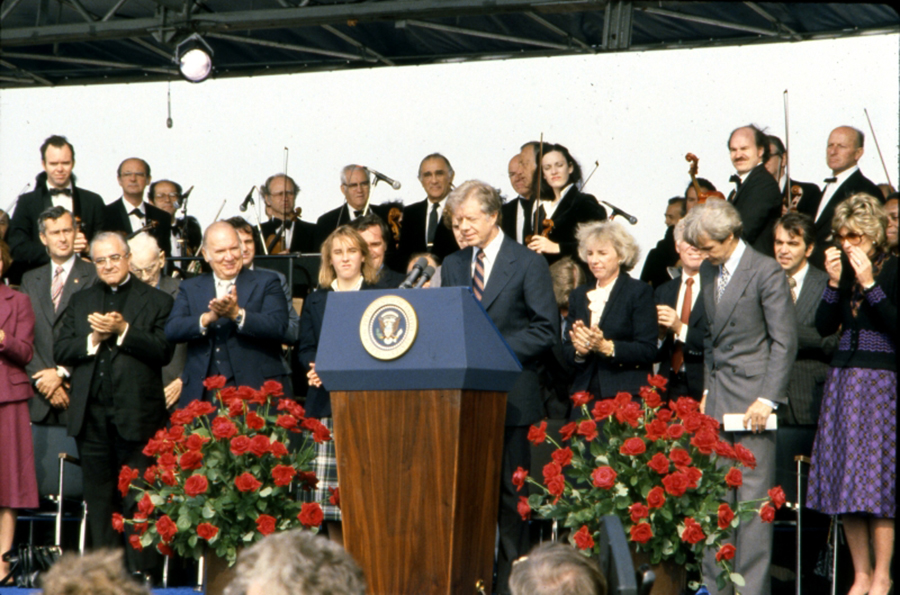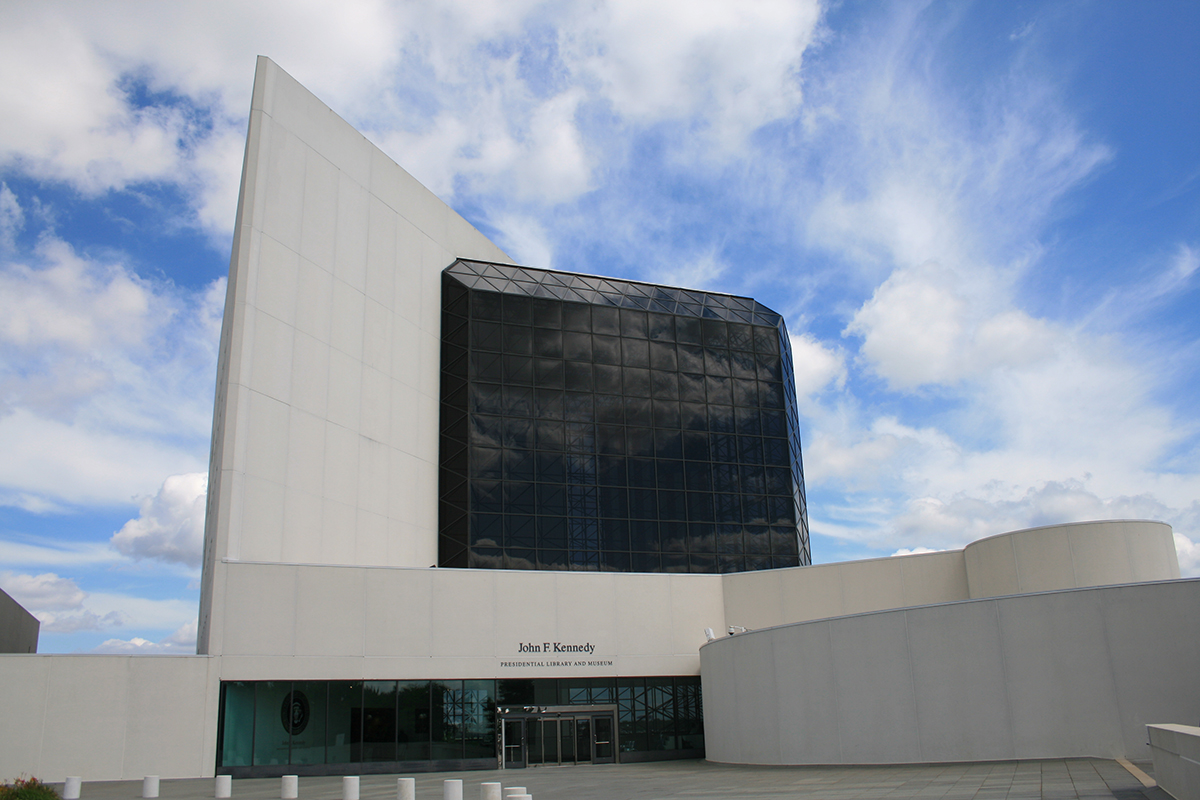Throwback Thursday: The Dedication of the JFK Library

Photo courtesy of the John F. Kennedy Presidential Library and Museum, Boston
On this day 37 years ago, the newly constructed John F. Kennedy Presidential Library in Columbia Point was officially dedicated. A ceremony on October 20, 1979 was attended by President Jimmy Carter and members of the Kennedy family.
“Like a great cathedral, this building was a long time coming,” said Carter in his dedication remarks. “But it more than justifies the wait. Its grace and its dignity are, I hope and believe, worthy of the man whose memory it will nurture.”
In 1961, President John F. Kennedy asked the Archivist of the United States about creating a Presidential Library in Cambridge. Kennedy thought that at the time, the four existing presidential libraries were placed “too far away from scholarly resources.”
When plans for the Kennedy Library began to form in the early 1960s, it was agreed that the site would have three parts: a museum, an archive, and an educational institute that would, according to the library, bridge “the gap between the academic world and the world of public affairs.”
John F. Kennedy originally chose a site for the library at Harvard University. Years later, after his assassination, a group called the Kennedy Library Corporation selected a new site next to the University of Massachusetts Boston campus at Columbia Point. The Harvard plans were abandoned after major delays in clearing the site. A few Cambridge residents also protested the congestion the library would cause.
Jacqueline Kennedy Onassis chose architect I.M. Pei to design the $20.8 million library in Dorchester. While she had a list of the country’s most well-regarded architects at her disposal, she thought Pei had the imagination to create a building that would underscore her vision for the institution. According to the library, at a planning meeting in 1964, Pei apologized to Kennedy, saying a young architect like himself hadn’t yet worked on monumental projects. She was not deterred, however, and chose Pei despite the fact that he was mostly unknown at the time.
“Its openness is the essence,” wrote Pei for the dedication ceremony. “In the silence of that high, light-drenched space, the visitors will be alone with their thoughts. And in the reflective mood that the architecture seeks to engender, they may find themselves thinking of John F. Kennedy in a different way. In the skyline of his city, in the distant horizons toward which he led us, in the canopy of space into which he launched us, visitors may experience revived hope and promise for the future.”
Pei would go on to design Le Grand Louvre in Paris, France, the West Wing of the Museum of Fine Arts, Boston, and other landmark constructions.
Today, the museum contains thousands of primary source documents, images, films, and audio clips that document the life of the country’s 35th president. The archival collections include the original papers and correspondence of the Kennedy Administration, personal papers of people like Jacqueline Bouvier Kennedy Onassis and Rose Fitzgerald Kennedy, an Ernest Hemingway collection, and more.

Photo courtesy of the John F. Kennedy Presidential Library and Museum, Boston

Photo by Nekonomist on Flickr/Creative Commons

